Edinburgh guide 
Scotland's capital boasts an iconic castle perched atop an extinct volcano, a famous Royal Mile full of museums, shops and pubs, and breathtaking views from Calton Hill. And if you're looking for a bit of magic, know that J.K. Rowling got her inspiration for Harry Potter here. You can hike Arthur's Seat or explore the mysterious underground Vaults. And every August, it hosts the Fringe Festival, the world's largest arts festival, which turns the entire city into one big stage. Edinburgh will draw you in with its energy, history and unique atmosphere - are you ready for a Scottish adventure?
Sights and attractions - What should you not miss in Edinburgh? The Castle, the Royal Mile, St Giles' Cathedral,...
Accommodation - Do you prefer accommodation on a boat, a luxury 5* hotel in the center, a guest house by the beach or a cheap backpacker hostel?
Typical food and drink - What you should try in Edinburgh - huggies, cullen skink, sotch pie, but also whiskey or gin.
Practical tips - Here you will learn about local transport, customs, festivals and celebrations,...
Weather - When does it rain the most and when does the icy wind blow? What temperatures can you expect in summer and winter?
Celebrities - What famous people lived and worked in Edinburgh?
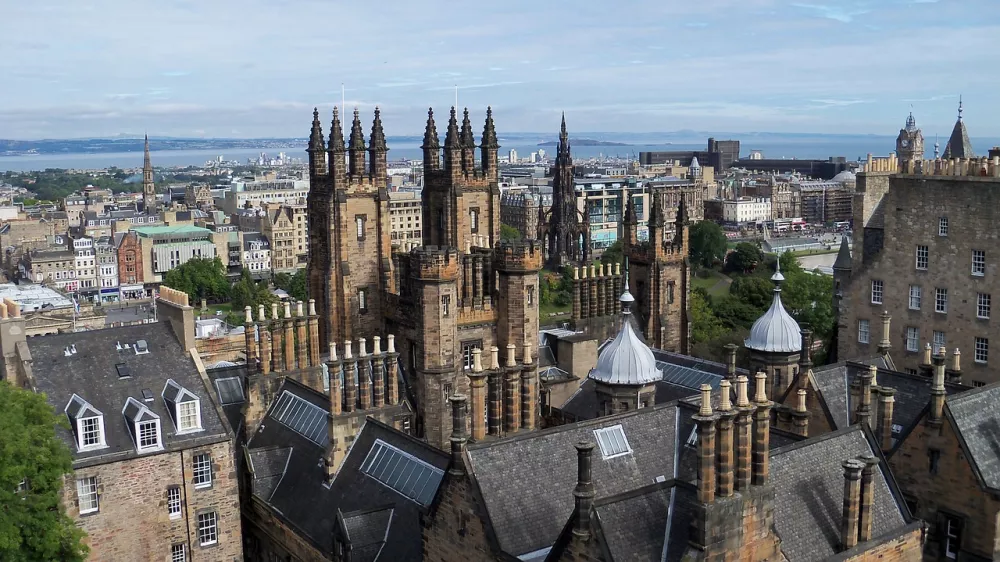
Edinburgh, the capital of Scotland and one of the most visited cities in Great Britain, is located on the east coast of Scotland, by the North Sea. The city is divided into two parts - Old Town and New Town, registered on the UNESCO World Heritage List.
With a population of about 530,000, English is spoken here, but some residents also use Scottish Gaelic.
Edinburgh is one of the most important tourist cities in Scotland, attracting about 13 millions of visitors each year thanks to its history, festivals and monuments.
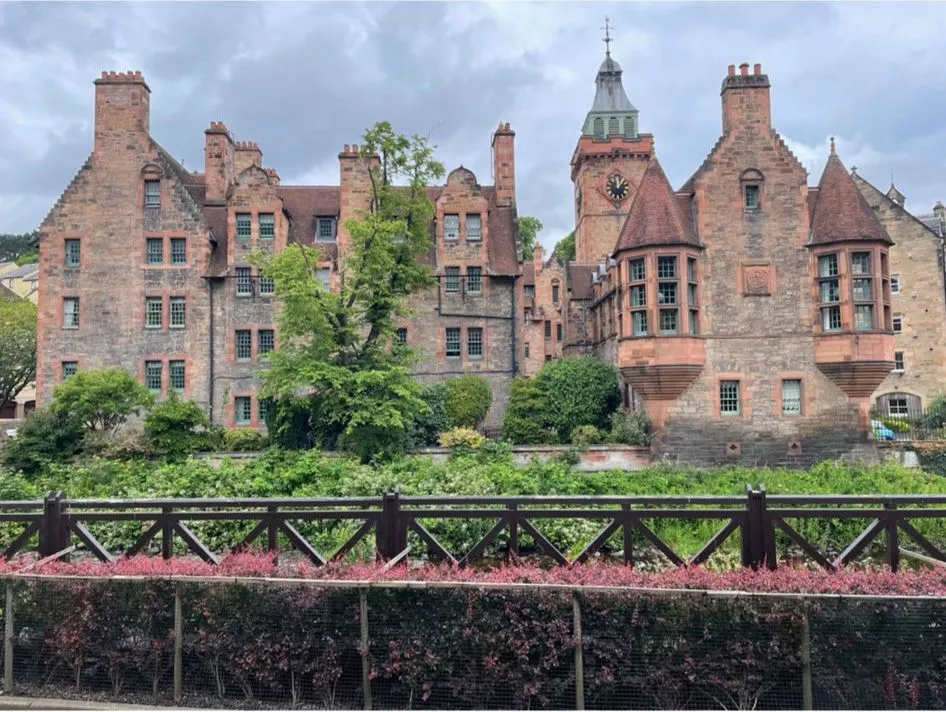
Edinburgh has a long and fascinating history that dates back more than a thousand years. The city was inhabited already in the Iron Age and later became the center of Scottish kings. In the Battle of Flodden in 1513, they killed King James IV. Therefore, they fortified the city shortly afterwards.
From the 17th century, Edinburgh became the intellectual center of Europe, especially during the Enlightenment. Philosophers and scientists such as David Hume and Adam Smith lived and worked here.
The dominant feature of the city, Edinburgh Castle, stands on a rocky hill and offers a magnificent view of the city. It is one of the most visited places in the whole of Britain. They kept Scotland's crown jewels in this castle with a rich history.
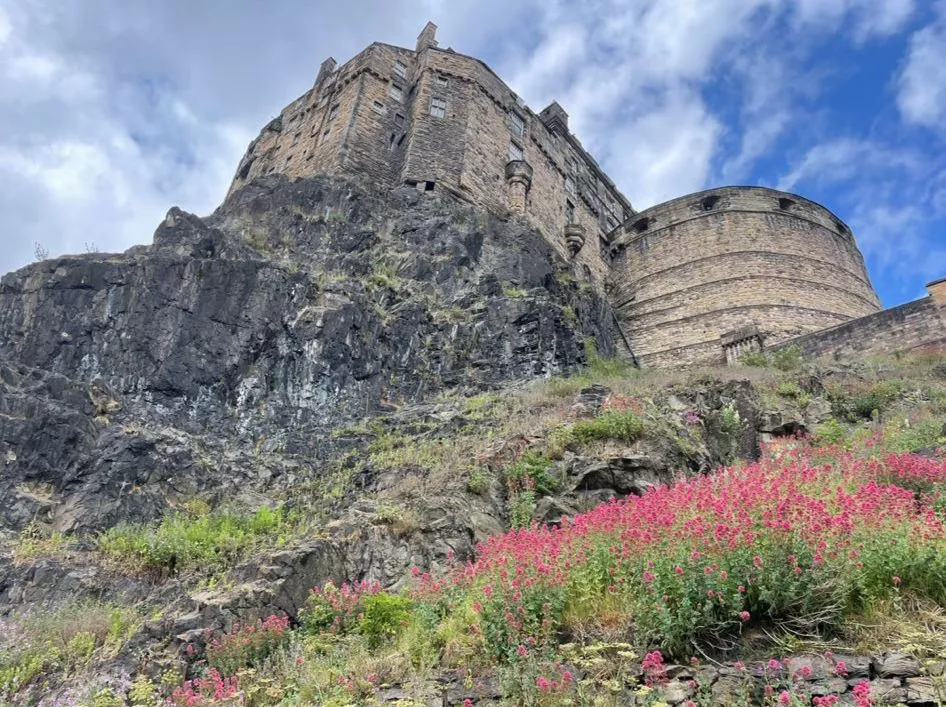
Every August, the city hosts the Edinburgh Festival Fringe, the largest arts festival in the world, which attracts artists and visitors from all over the world. In 2024, it lasted 25 days!
Other festivals include the Edinburgh International Festival, the Edinburgh Book Festival and the famous Hogmanay, a New Year's Eve celebration with fireworks and concerts.
It is home to the University of Edinburgh, one of the oldest and most prestigious universities in the world, founded in 1582. The city is home to many important scientists, such as Alexander Fleming or James Clerk Maxwell.
In addition to the rich culture in Edinburgh today, you will also find excellent restaurants and shopping centers. It represents the center of Scottish political life as it is home to the Scottish Parliament.
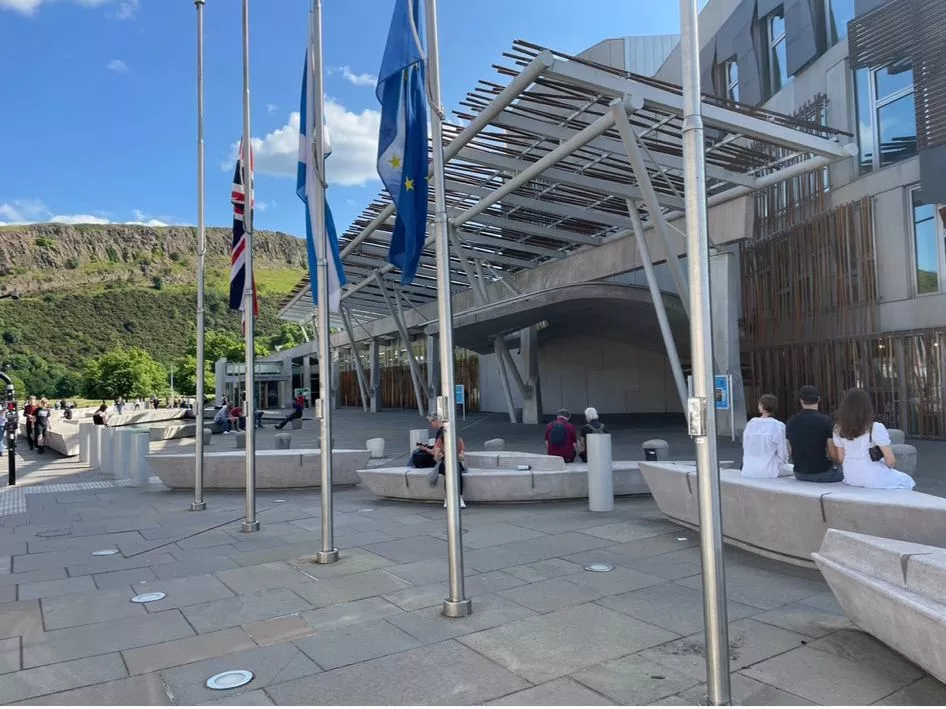
Thanks to its architecture, festivals and historical charm, Edinburgh is one of the most beautiful cities in Europe.
Sights and attractions
Edinburgh Castle - This medieval fortress stands on a volcanic rock and offers stunning views of the city. It is one of the most famous and visited attractions in Scotland. And also one of the most besieged - it was attacked at least 26 times during its more than 1,100-year existence, making it not only one of the most important fortresses in Scotland, but also one of the most frequently attacked fortifications in the world. Inside you will find the Crown Jewels of Scotland and the famous Stone of Destiny, which was used in the coronations of Scottish kings.
Address: Castlehill, Edinburgh.
Royal Mile - The historic main street of the Old Town connects Edinburgh Castle with Holyrood Palace. You will find medieval houses, Gothic churches, narrow winding passages called “closes” and bustling street life. In addition to St Giles’ Cathedral, it is also home to important institutions such as the Scottish Parliament and the Court of Justice. The entire Royal Mile is literally a living museum of Scottish history – from royal processions and coronations, through dramatic fires and public executions, to the annual Edinburgh Fringe festival, when the street turns into a major center for street performances.
Address: 122 High Street, Edinburgh.
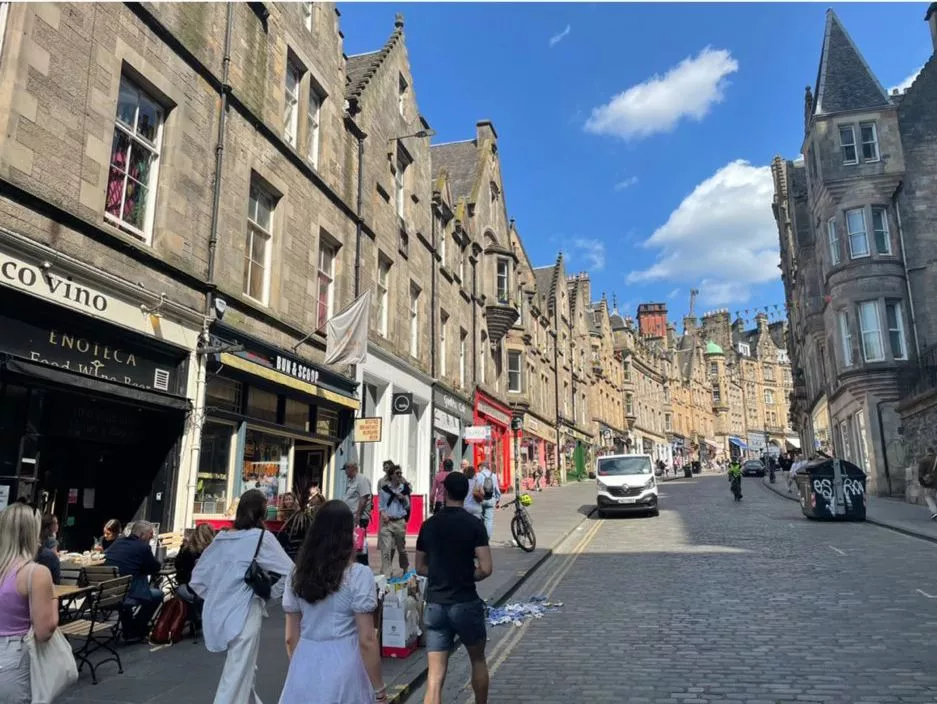
St Giles' Cathedral - One of the most important historical and religious buildings in all of Scotland. It is located on the Royal Mile in the Old Town. Although commonly referred to as a cathedral, it is not officially a cathedral, as it does not house a bishop. However, it is the main church of the Church of Scotland in Edinburgh. Over time, the cathedral has been used not only as a place of worship, but also as a meeting place for the Scottish Parliament, a courthouse and even a prison
Address: High Street, Edinburgh.
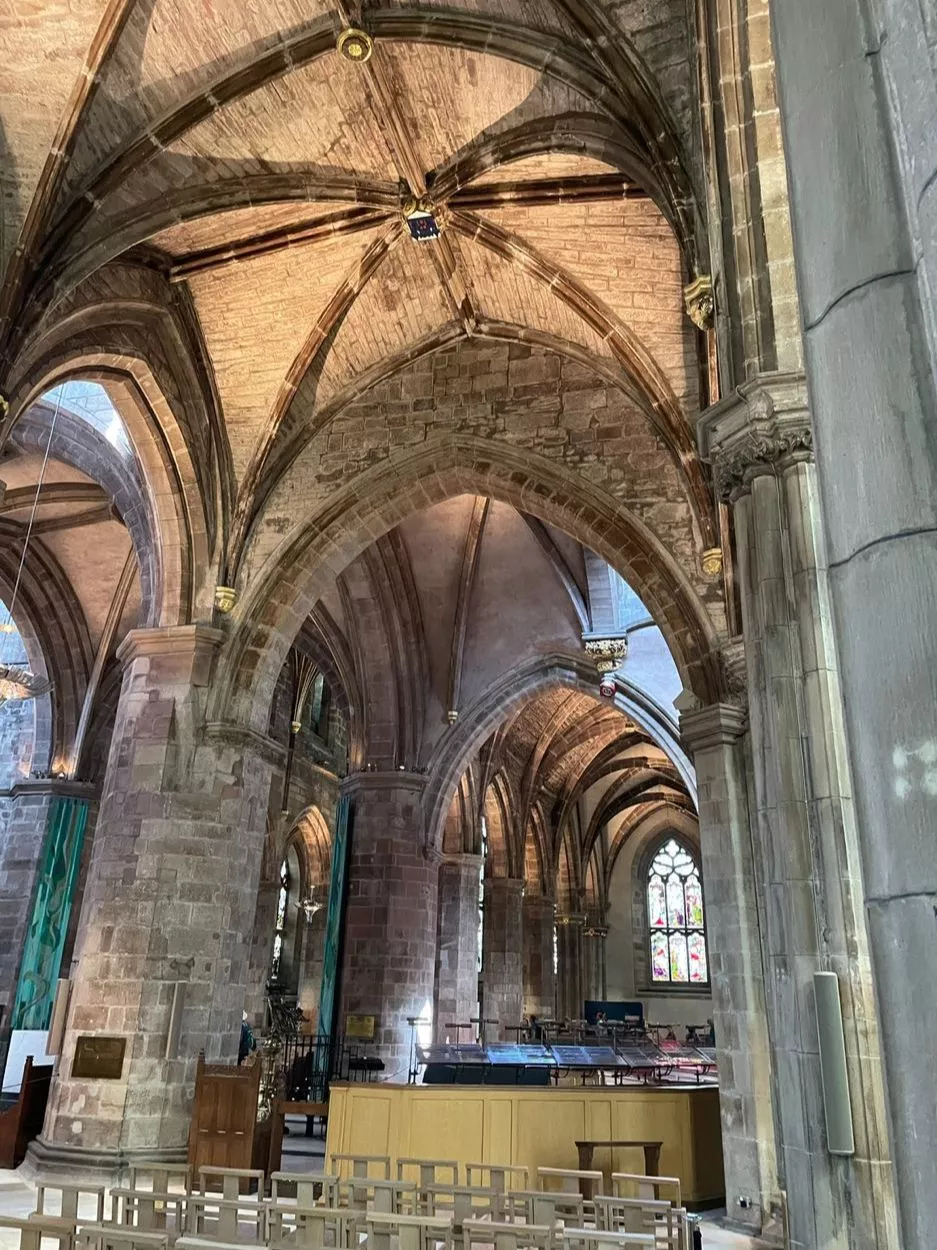
Palace of Holyrood - The official residence of the British monarch in Scotland and a significant historical building. The palace is associated with the destinies of Scottish kings and queens, including Mary Queen of Scots. In James V's Tower you will find Mary Queen of Scots's original apartments. The palace is adjacent to the ruins of the original Augustinian abbey from 1128 and beautiful gardens.
Address: Canongate, Edinburgh.
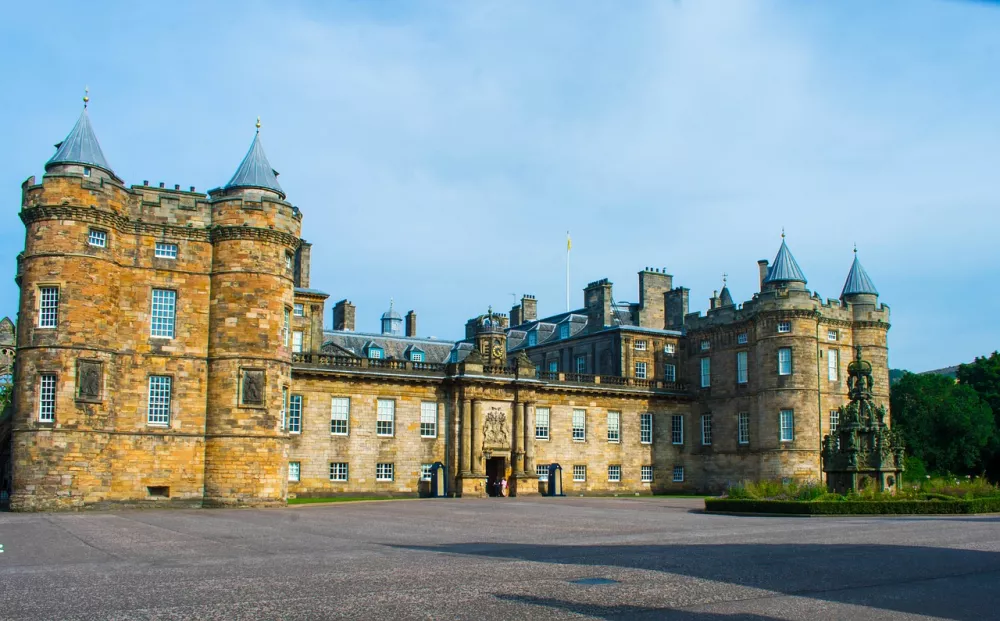
Arthur's Seat - An extinct volcano and one of Edinburgh's most famous natural attractions. This 251-metre-high mountain offers stunning views of the city and is a popular destination for tourists and locals alike. It is located in the middle of Holyrood Park. The name "Arthur's Seat" is shrouded in legend - some connect the place to the legendary King Arthur and Camelot, others derive the name from the Celtic term for "hill of arrows" (Àrd-na-Said).
Address: Holyrood Park, Queen's Drive, Edinburgh.
Scott's Monument - A Gothic monument dedicated to the Scottish writer Sir Walter Scott. Located on Princes Street, it is one of the tallest monuments erected in honour of the writer. It stands 61 metres tall and is reached by 287 winding steps. The monument is decorated with 64 statues representing characters from Scott's novels.
Address: East Princes Street Gardens, Edinburgh.
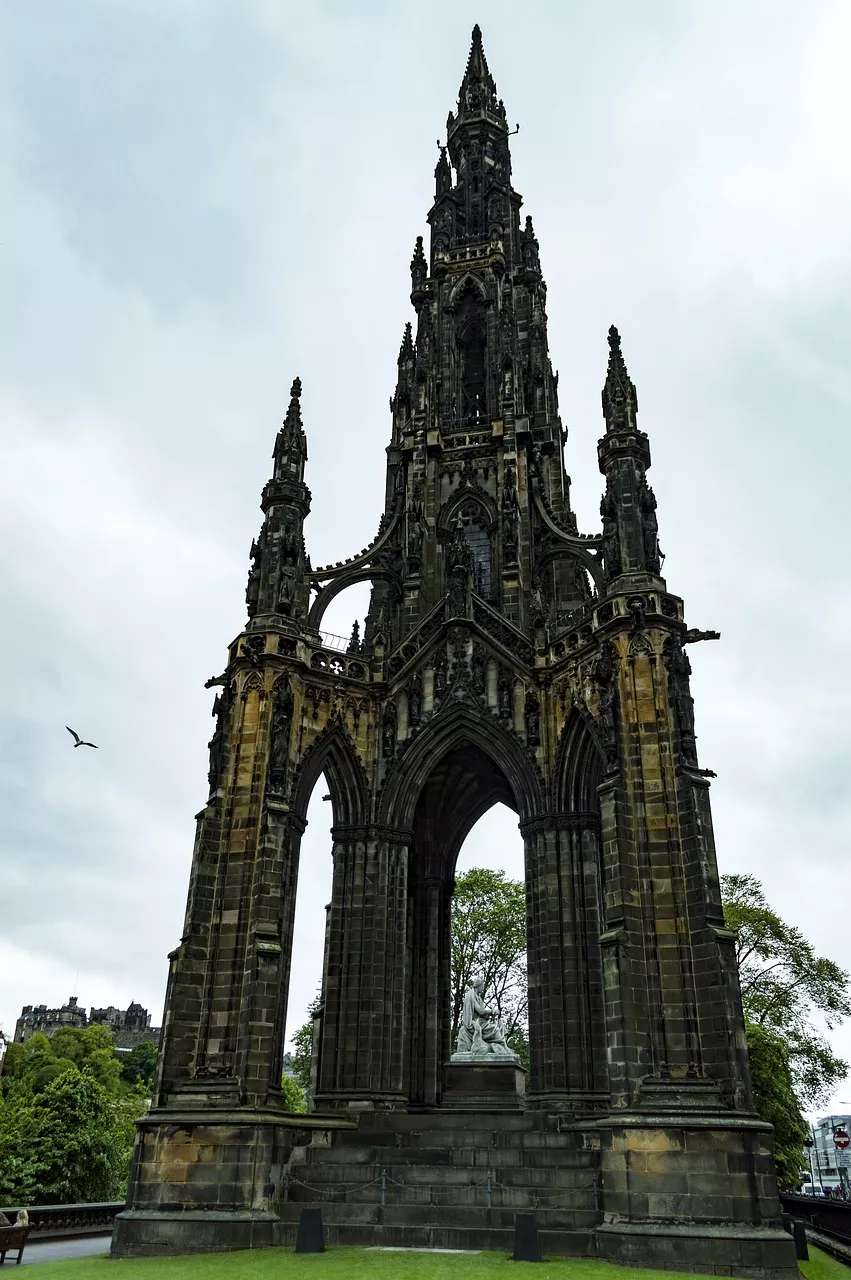
National Museum of Scotland - This museum offers fascinating displays on Scottish history, science, technology, nature and art. The museum is free to visit. Some of the rarest exhibits include the stuffed Dolly the sheep, the world's first cloned mammal, the famous medieval Lewis Chessmen and the harp of Queen Mary of Scotland
Address: Chambers Street, Edinburgh.
Edinburgh Dungeon - A tourist attraction that brings the city's dark history to life in a fun and spooky way. During the approximately 70-minute tour, led by professional actors, visitors can expect interactive performances inspired by real historical events and legends - from the witch trials, through plagues and medieval torture, to the infamous cannibals Sawney Bean and notorious criminals Burke and Hare. An important part of the experience is also the "Drop Ride to Doom" - a free fall simulating a public execution in the Grassmarket.
Address: 31 Market Street, Edinburgh.
Calton Hill - A hill with beautiful views of the city, on top of which there are several interesting monuments, including the National Monument of Scotland (inspired by the Athenian Parthenon) and the Nelson's Monument. It belongs to the city's UNESCO heritage reserve. It regularly hosts the Beltane Fire Festival, honoring Celtic traditions. Calton Hill is freely accessible and is one of the best places in Edinburgh to watch sunrises and sunsets.
Address: Calton Hill, Edinburgh.
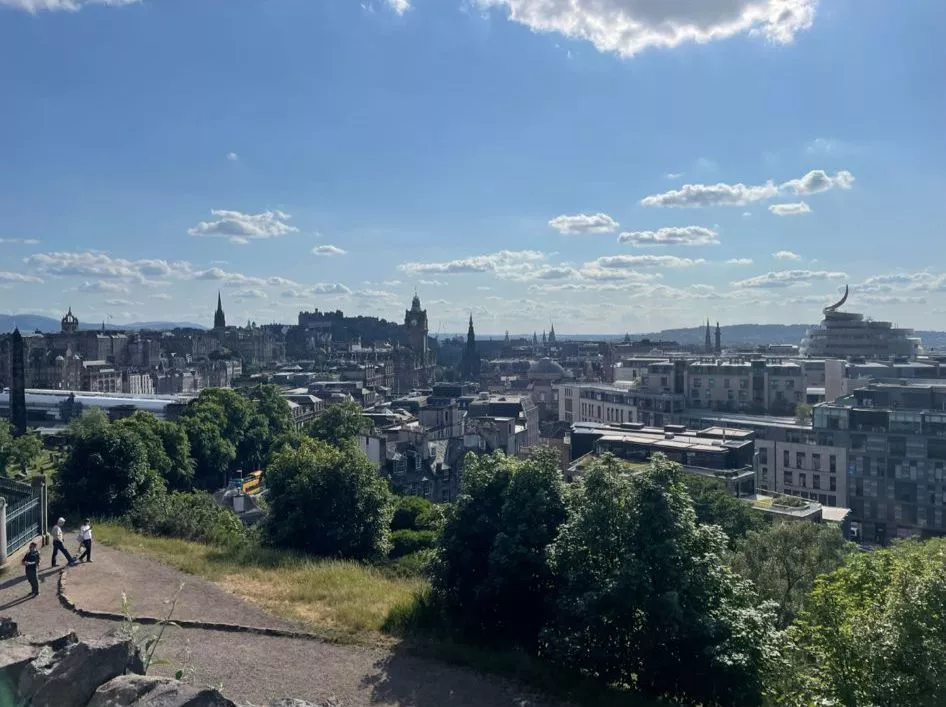
Grassmarket - A historic market place and one of the liveliest parts of the city. You will find plenty of pubs, cafes and shops here. The market has a long history, dating back to the 14th century, when livestock, agricultural produce and other goods were sold here and daily markets and various festivals were held here. From the 17th to 18th centuries, it was also the main place of execution in Edinburgh.
Address: Grassmarket, Edinburgh.
Dynamic Earth - An interactive museum focusing on the development of the Earth, the universe and nature. It offers visitors a fascinating journey from the formation of the planet to the present day. Visitors can experience, for example, an earthquake or a tropical monsoon in a rainforest or explore the depths of the ocean on a simulated research ship.
Address: 112 Holyrood Road, Edinburgh.
Greyfriars Kirkyard - A historic cemetery with many interesting headstones, including the famous Greyfriars Bobby, a dog who faithfully guarded his owner's grave. In the 17th century, part of the cemetery was used as a makeshift prison camp. The place is also popular with Harry Potter fans, as some of the names on some of the headstones are said to have inspired characters from the book.
Address: 26A Candlemaker Row, Edinburgh.
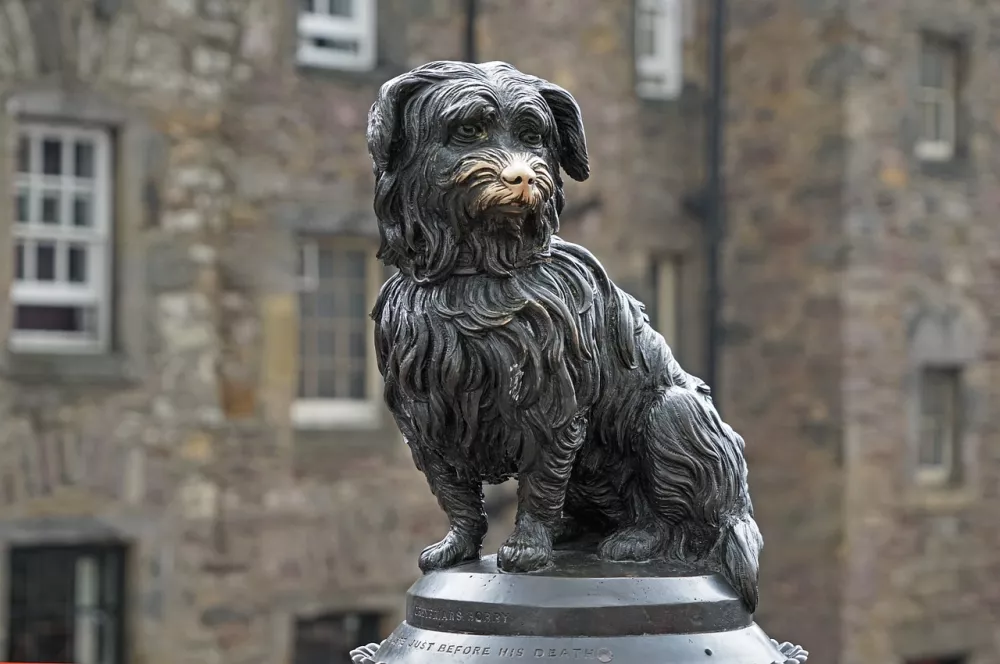
Dean Village - A picturesque district located near the city center, located along the Water of Leith. For more than 800 years, the district was an important mill center - there were as many as 11 mills. Today you can admire beautiful historic houses and beautiful gardens.
Address: Dean Path, Edinburgh.
Accommodations
In Edinburgh you can choose from many different accommodation capacities (almost 1700). Accommodation is offered by many apartments, hotels, guesthouses, hostels, houses and villas. Those who want to be in the center of the action can book accommodation directly in the Old Town. Those looking for cheaper, stylish accommodation can stay, for example, in the beautiful district of Leith.
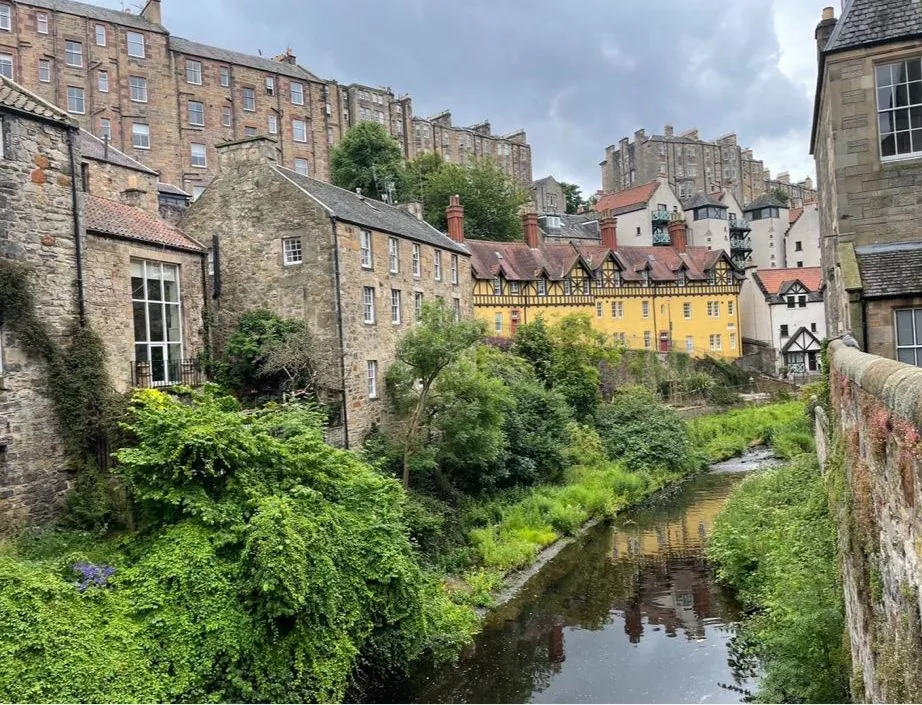
In Leith, you'll also find stylish accommodation on board the Ocean Mist Leith on the Water of Leith. It is moored just 900 meters from the Royal Yacht Britannia. You can relax on the sunny terrace with outdoor furniture. You can stay in rooms or apartments, the price already includes a continental breakfast.
You can enjoy luxury in the city center, for example, at the 5* hotel 100 Princes Street. In the local restaurant you can taste the specialties of Scottish and English cuisine. You can also have refreshments in the snack bar. At the 24-hour reception, you can use concierge services or luggage storage.
On Princes Street you will also find the iconic 5* The Balmoral Hotel, operating for over 100 years. In the wellness studio you can enjoy an indoor pool, a sauna, a Turkish steam room, 5 treatment rooms and a fitness studio. In addition to the restaurant, the hotel also offers a Scotch bar, where you can taste over 500 different types of whiskey!
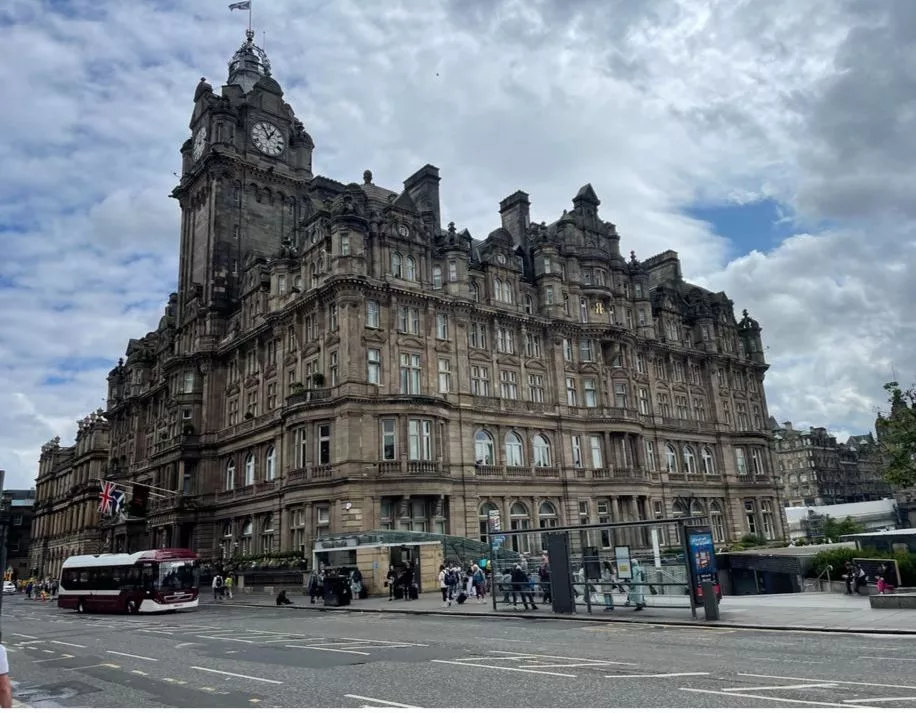
The classic family 3* Hotel Ceilidh-Donia is located near the city center in a quiet residential area. The center of Edinburgh is easily accessible by bus. The shared lounge, garden or terrace will be used for relaxation and rest. You can also use the bar or grill here.
The Straven Guesthouse offers pleasant accommodation near Portobello Beach. The city center is about 5 km away and you can get there by bus from a nearby stop. The room price already includes breakfast. You can enjoy a beautiful view of the sea from some rooms. Everyone has a shared lounge and a garden with a bench in front of the house.
If you are looking for cheap accommodation, Castle Rock Hostel - Adults Only offers accommodation in shared rooms. The hostel is right in the center of town near Waverley train station, making it ideal for backpackers. The accommodation does not offer breakfast, but guests have access to a large kitchen, a lounge with a fireplace, a movie room and an internet lounge.
For a complete offer of accommodation in Edinburgh, we recommend using A-HOTEL.com or Booking.com.
Typical foods and drinks
Haggis - One of the most famous Scottish dishes, prepared from a mixture of minced sheep meat (lungs, liver and heart), onions, oats and spices. It is traditionally cooked in a sheep's stomach. It is usually served with neeps and tatties (potatoes and turnips) and often with Scotch whiskey sauce.

Scotch Pie - A traditional Scottish meat pie filled with minced meat, usually lamb or beef. It is most often served at picnics or football matches.
Cullen Skink - A thick soup from the Scottish countryside, made from smoked cod, potatoes and onions. The locals liked it as an appetizer and as a hearty lunch.
Black Pudding - A blood sausage or intestine that usually forms part of a Scottish breakfast. It is prepared from pork blood, oatmeal and spices.
Full Scottish Breakfast - Similar to an English breakfast, it includes a fried egg, bacon, sausages, black pudding, baked beans, tomato, mushrooms and toast. Sometimes it also includes tattie scones.
Bannock - Traditional Scottish bread - large, flat and round. It is made from flour, oatmeal or potatoes and then fried in a pan or baked in the oven.
Shortbread - Traditional shortbread, very popular not only in Edinburgh, but throughout Scotland. They are tender, sweet and rich in butter.
Whiskey - Scotch whiskey is famous all over the world, and in Edinburgh you will find many specialist shops and bars that offer a wide selection of local and national whiskies. Whiskey is made in a variety of ways, from single malt to grain whisky.
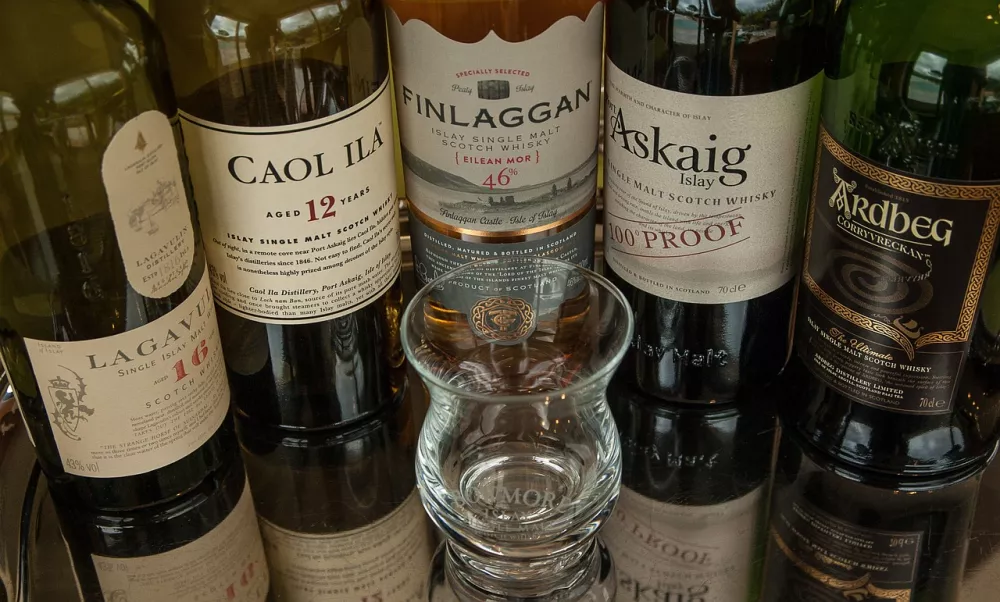
Irn-Bru - A soft drink, one of the most popular in Scotland. You can recognize Irn-Bru by its orange color and sweet taste. It is "Scotland's national lemonade".
Ales and Beer - Scottish ales, particularly types such as Scottish Ale or Wee Heavy, are popular in pubs across Edinburgh. The city also has a number of breweries that produce local beers and specialty brews.
Gin – There are several gin distilleries in Edinburgh. Popular brands that are sold around the world include Edinburgh Gin. Consumers liked it for its quality and variety of flavors.
Practical advice for the trip
Edinburgh has a well-organized public transport network, including buses and trams. Lothian Buses, the main operator, offers all-day tickets, convenient for tourists. A tram line connects the airport with the city center.
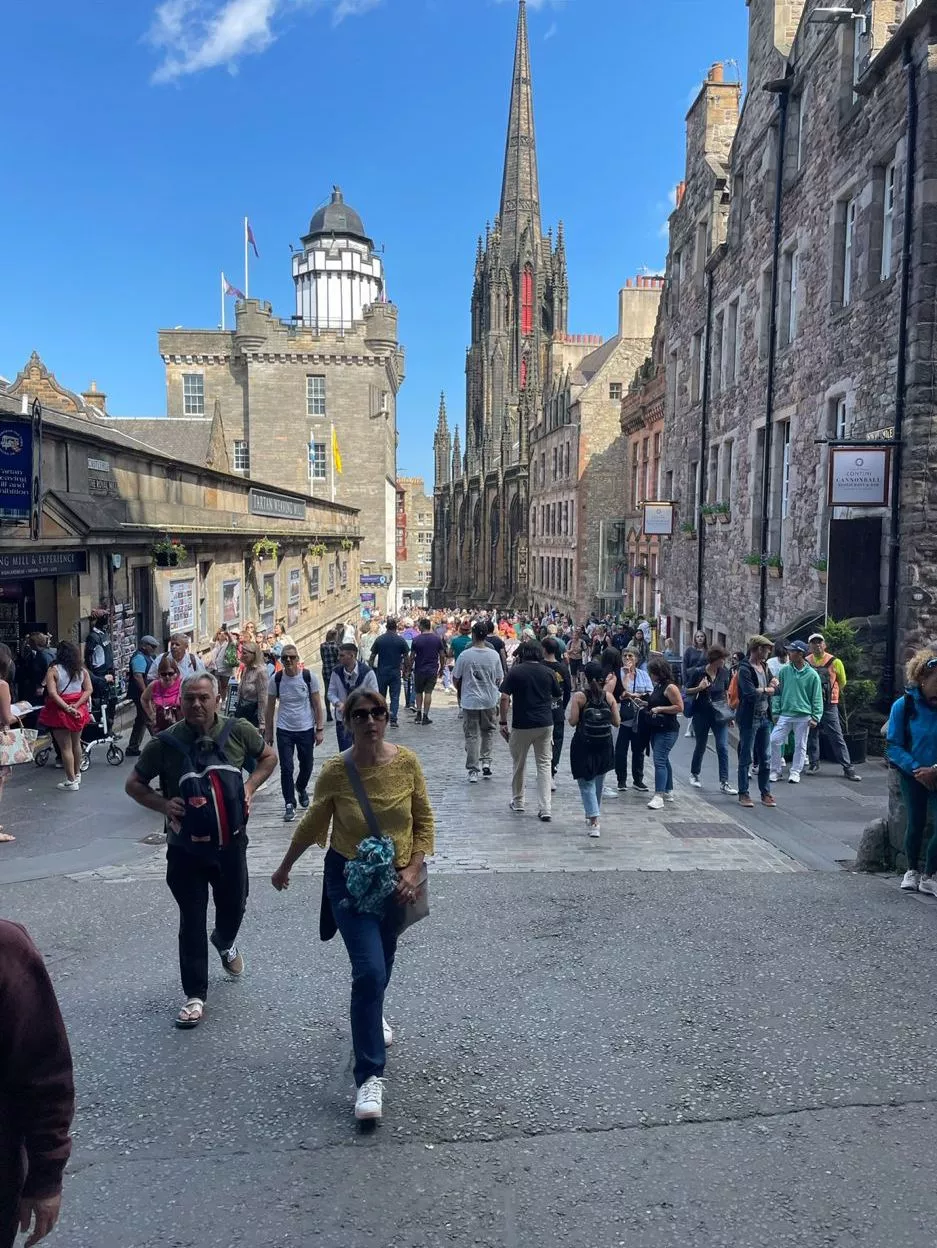
You can walk around the center of Edinburgh quite easily, especially areas like the Royal Mile, the Old Town and the New Town.
Both classic taxis and Uber operate in Edinburgh.
Edinburgh has safe and well-marked cycle paths, so renting a bike can also be a great option.
The weather in Edinburgh changes quickly and you will often experience both sun and rain in the same day. Therefore, we recommend that you bring a waterproof jacket and layered clothing so that you are not surprised by colder weather or showers.
For some of the famous sights, such as Edinburgh Castle, book your tickets in advance online to avoid long queues.
Nature lovers will also enjoy the city by heading to Arthur's Seat or Calton Hill, both of which offer stunning views of the city.
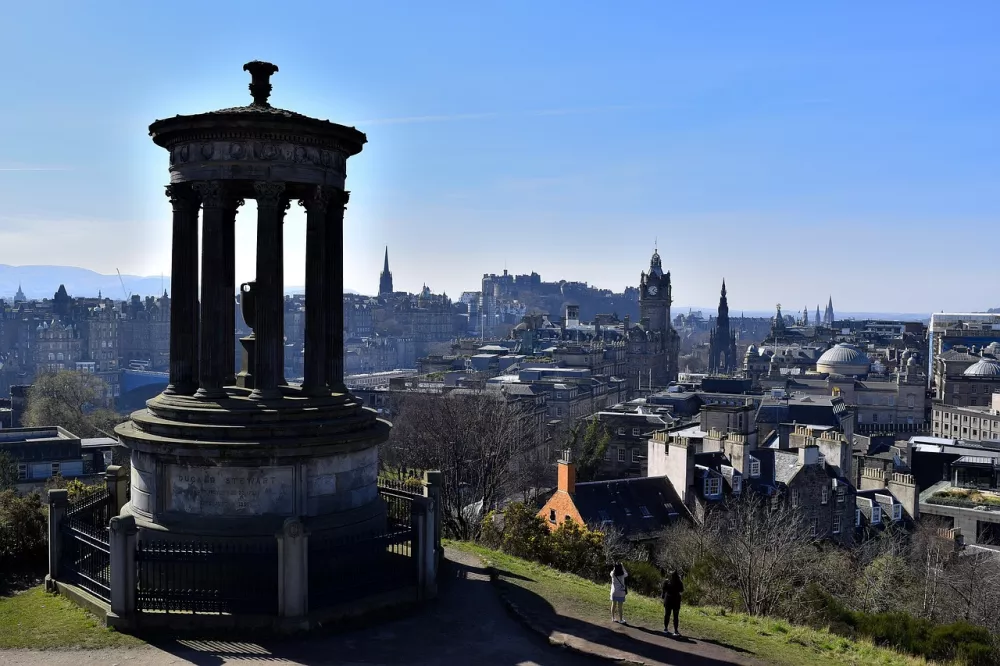
Although English is spoken here, you may come across some Scottish expressions. "Aye" means yes and "wee" means small.
Edinburgh Festival Fringe and Edinburgh International Festival are among the biggest cultural festivals in the world. Both take place in August. If you plan to attend, book your accommodation and show tickets well in advance, as the city tends to be very busy during this time.
Scotland's New Year celebrations, known as Hogmanay, are famous for their large fireworks displays, concerts and festivities. You can experience Scottish traditions here.
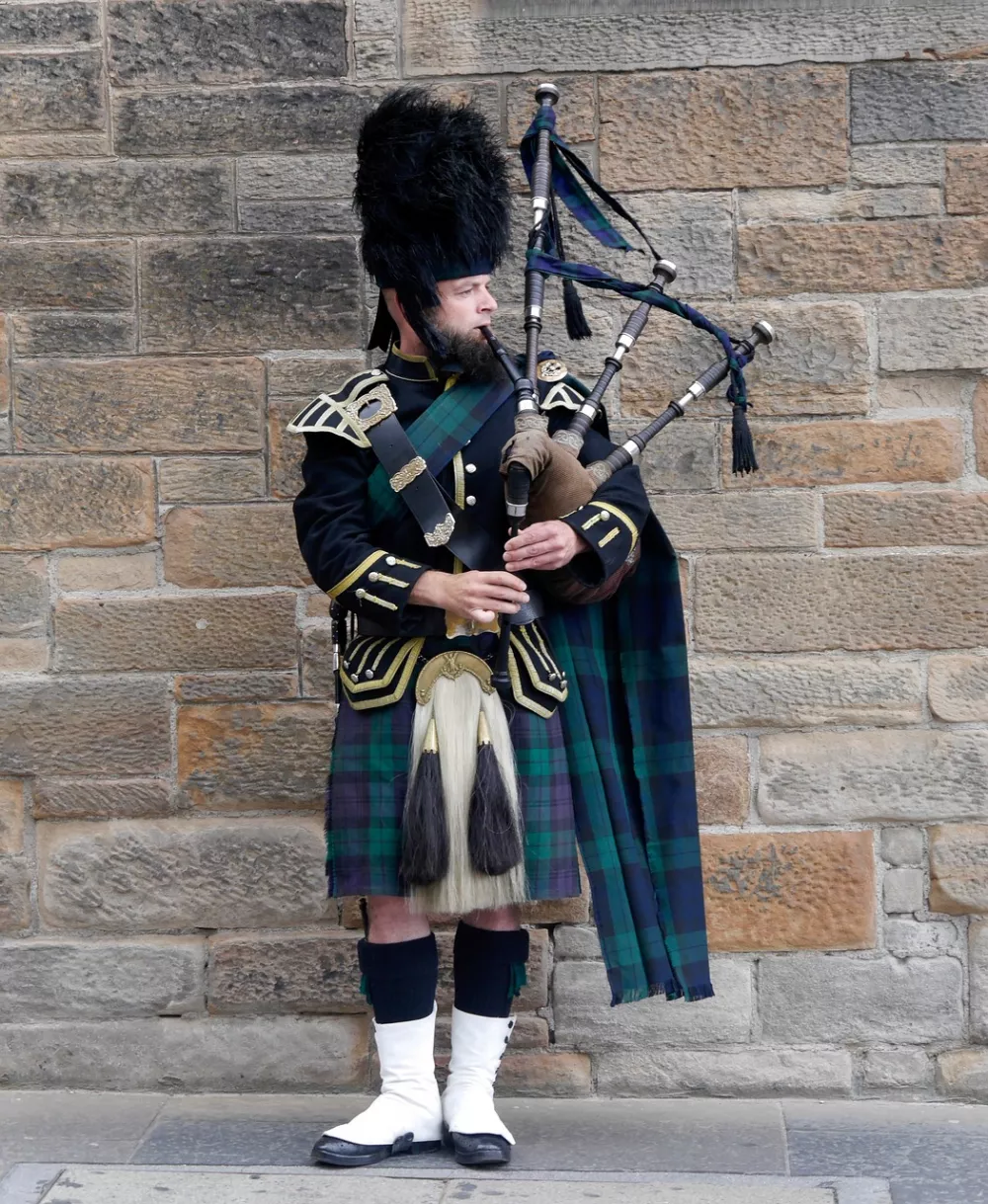
Edinburgh is generally considered a safe city, but as in any big city, be careful with your personal belongings, especially in tourist areas or at festivals.
👍 Our tip: Rosslyn Chapel. The historic chapel was founded in 1446 by Sir William St. Clare about 10 km from the center of Edinburgh. The building was originally intended to be a large cathedral in the shape of a cross, but after the founder's death, only the eastern part was completed, leaving the chapel smaller. You can admire the rich and mysterious ornamental stonework decoration here, which includes various symbols, plants, figures and esoteric motifs. In recent years, most tourists have come here because of the chapel's appearance in the novel and film "The Leonardo Da Vinci Code".
Weather
Edinburgh has an oceanic climate: mild but changeable throughout the year.
Summer temperatures are usually between 15-20 °C. During the hottest months of July and August, the sun often shines, but it also rains occasionally.
Winters tend to be cold, but not too freezing. Average temperatures in winter range between 0-7 °C. It doesn't snow often here, but a very cold wind blows from the sea.
It often rains in Edinburgh, evenly throughout the year, but the least in April and May. Overall, brief showers and changeable weather are expected.
Strong winds often blow here, especially in winter, due to the location near the North Sea.
Famous people associated with Edinburgh
Sir Walter Scott (1771–1832) - Writer and poet. One of Scotland's most famous writers, known for his historical works such as Waverley and Ivanhoe. In Edinburgh stands the Scott Monument, which they dedicated to his memory.
Robert Louis Stevenson (1850–1894) – Writer. The author of classic works such as The Strange Case of Dr. Jekyll and Mr. Hyde and Treasure Island. Stevenson was born in Edinburgh and his hometown also influenced his work.
Alexander Graham Bell (1847–1922) - Inventor of the telephone. He was born in Edinburgh and became famous above all for the invention of the telephone. Although he spent most of his life in the United States and Canada, his family came from Edinburgh.

David Hume (1711–1776) – Philosopher. One of the most important philosophers of the Enlightenment, whose works influenced modern philosophy, especially in the area of skepticism and empiricism. Hume studied and lived in Edinburgh.
Adam Smith (1723–1790) - Economist and philosopher. Author of The Wealth of Nations, which is considered the cornerstone of modern economics. Smith lived and worked in Edinburgh, where he participated in the Scottish Enlightenment.
James Clerk Maxwell (1831–1879) – Physicist. One of the most important scientists of the 19th century, known primarily for his work on electromagnetism. Maxwell was born in Edinburgh and his work laid the foundation for modern physics.
Arthur Conan Doyle (1859–1930) – Writer. Creator of the famous detective Sherlock Holmes. Conan Doyle was born in Edinburgh, where he also studied medicine.
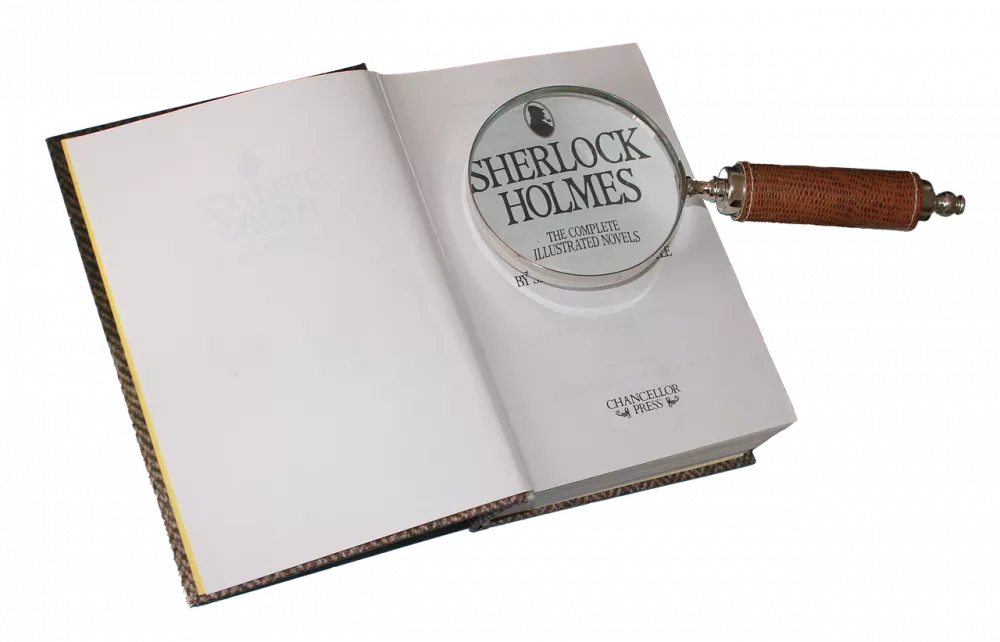
Sean Connery (1930–2020) – Actor. One of the most famous Scottish actors, known mainly for his role as James Bond. Connery was born and raised in Edinburgh, where he also worked as a milkman before his acting career.
JK Rowling (1965) - Writer. Author of the Harry Potter series. Although she was born in England, Rowling lived in Edinburgh, where she wrote much of her famous series. Some of the cafes in the city, such as The Elephant House, are associated with her writing.
Irvine Welsh (1958) - Writer. The author of the cult novel Trainspotting, which takes place in Edinburgh and depicts the life destinies of young people from the margins of society.
